When the Montgolfier Brothers first took to the sky in 1783, they travelled six miles across the western outskirts of Paris and ascended to an incredible 3000ft. The brothers cut the flight short because they could not prevent the heat from the fire from scorching the fabric of the balloon.
The principles are the same 200 years late. But modern materials allow greater altitudes and longer distances and greater payloads. And hot-air ballooning has become a popular tourist attraction in many parts of the world.
In recent years, I have been fortunate to have flown in both Sri Lanka and Myanmar, with ballooning experiences over Ngapali offering the most beautiful photo opportunities. Drifting silently over mist draped valleys, rivers, forests, temples and villages —a truly remarkable experience.
Early start
Hot air balloon flights are typically made soon after first light. The fun begins with a burner test and inflating the balloon, usually while coffee and pastries are served. However, the adventure starts much earlier as the launch sites are generally in rural locations suitable to the prevailing winds and ultimate destination. The journey to the site is invariably made by jeep or pick up truck over unmetalled roads and farm tracks.
The theatre begins following the burner test when the balloon is laid flat on tarpaulins while the fans and burner are strategically positioned. The mouth of the balloon is now held open by a few of the six to eight ground crew members who are in attendance throughout the flight. A robust generator-driven fan fills the balloon with air while the pilot makes final checks on the integrity of the canvas. With the balloon now inflated and horizontal with the burner and basket on its side, the burner is ignited, and the balloon and basket turn through 90 degrees.
At this point, there is a safety briefing while the crew secure the basket ready for boarding and at the command, we climb into the basket. Once the passengers are in the basket, launch and landing drills are carried out before the basket is released. At the same time, hot air is delivered to the balloon, and we ascend. Throughout the flight, the pilot is in radio contact with both the ground crew and the local airfield in Thandwe.
Wind mercy
Once airborne, we are entirely at the mercy of the prevailing winds, and the pilot can only control the balloon vertically to ensure that we are in an airstream that is taking us in the anticipated direction. It is interesting to see that the prevailing winds may be in different directions at different altitudes. Very often the smoke from the fires in the villages below is drifting in one direction and the balloon in another.
In Ngapali, the route generally follows the Thandwe river with its fishermen in long-tail boats propelled by powerful outboard motors in evidence and creating a wash and patterns in its wake. We drift silently over villages with villagers and their children waving and shouting Minglabar (a greeting) from below. Almost in every direction, there is the golden spire of one of the many temples and pagodas in the region.
Golden pagodas
Myanmar is a predominantly Buddhist country with devotees following the Theravada teachings. Around five per cent of the population is Muslim, and the problems with Rohingya Muslims have been well documented. Christianity is also prevalent in some areas, dating back to the British era when Burma was a part of British India.
The pagodas were not traditionally golden. It was only in the late nineties when Myanmar was waking from its years of being shrouded in secrecy and wishing to open up to tourism that it is said that general Than Shwe decreed that they should be painted gold.
As we drift effortlessly following the river and over forests and farmland we can see the men and women from the villages tending their crops and livestock along with the occasional ox cart or tractor. We see brickworks with their neatly piled bricks around awaiting collection and delivery to the surrounding towns and villages and red and white radio masts on hill tops. After about an hour we are approaching our destination.
We are now in descent, and the pilot is in radio contact with the ground crew who are assessing a suitable place to land. This, it has to be said, is not a precise science as we are soon to find out. The grounds of a Swiss-funded old peoples’ home was looking like a possibility but the wind dictated otherwise and we are pushed to the wrong side of the river. Unfortunately, since the bridge across the river had partially collapsed under the weight of the ground crew’s truck, this wasn’t a happy prospect. Following a hasty retreat and much gnashing of teeth, the crew waded through the river and dragged the balloon to the near-side bank.
Ultimately we bounce to our final landing area while crouching in the landing position in the basket. Then, as we are once again on our feet, further theatre ensues as the balloon is deflated and laid to rest on the hastily positioned tarps.
I have made this flight several times and on each occasion have captured many images that are possible only from the air or from a very high vantage point. The early morning mists lend great mystery to the pictures, rendering the otherwise vibrant colours as delicate pastel shades.
On a more general note, I used only one camera, an SL with the 90-280mm telephoto zoom and the 24-90mm for the launch and landings. There is no room in the basket for camera bags or rucksacks. The balloons are usually of British manufacture — Cameron of Bristol — and the pilots invariably British and often from Bristol. It is recommended that you wear only clothes made from natural fibres and a hat is essential beneath the burner. This is the only time that I wear a baseball hat!

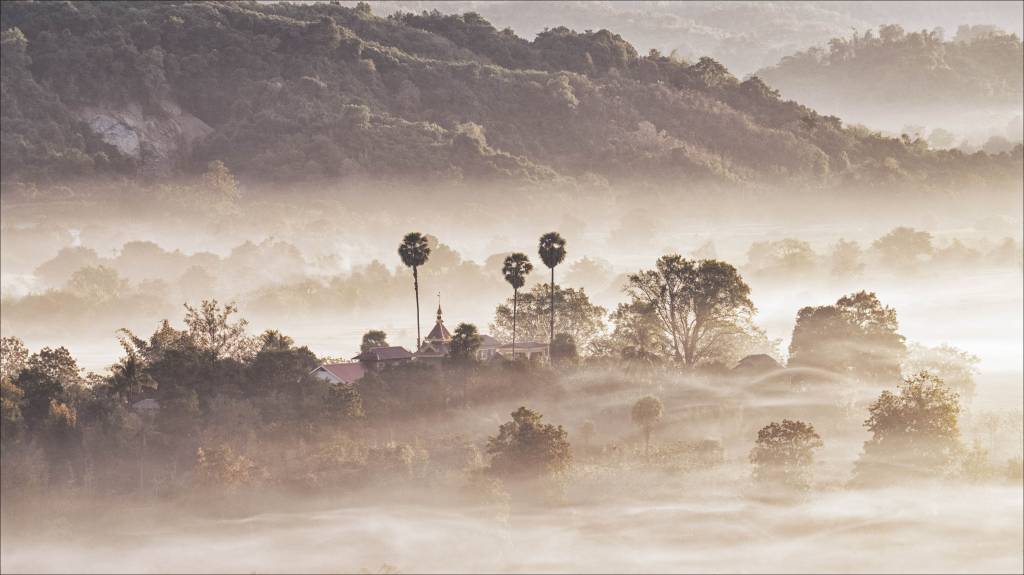
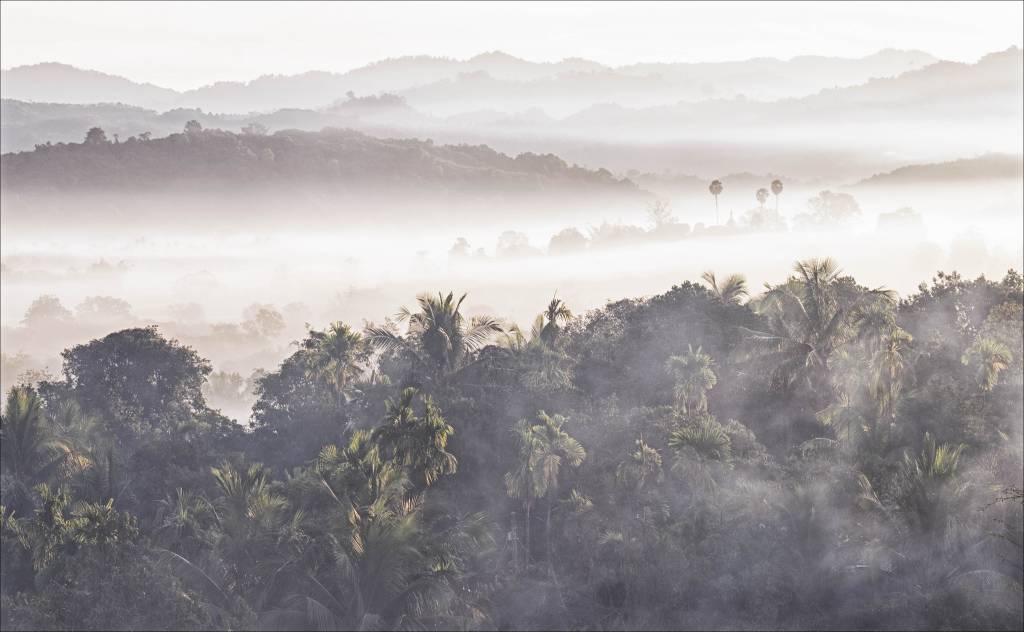
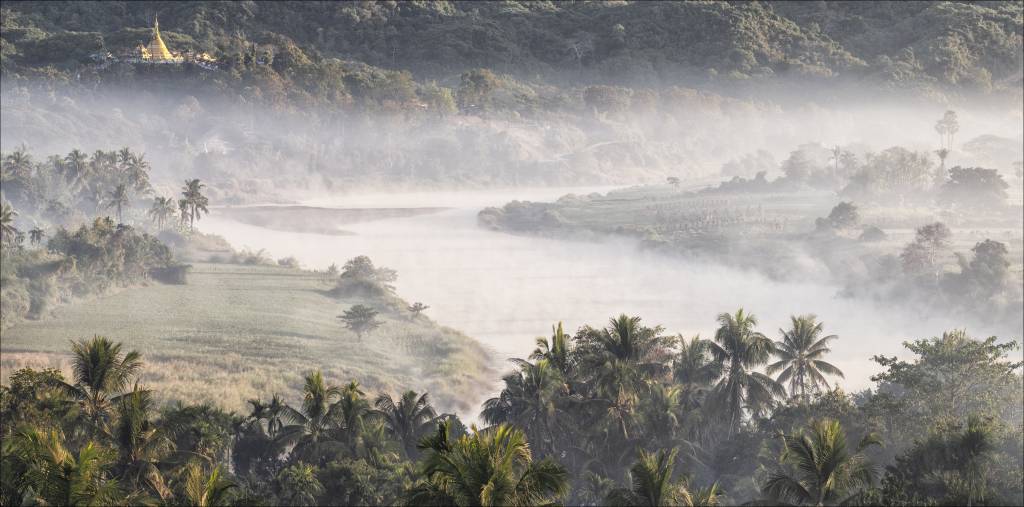
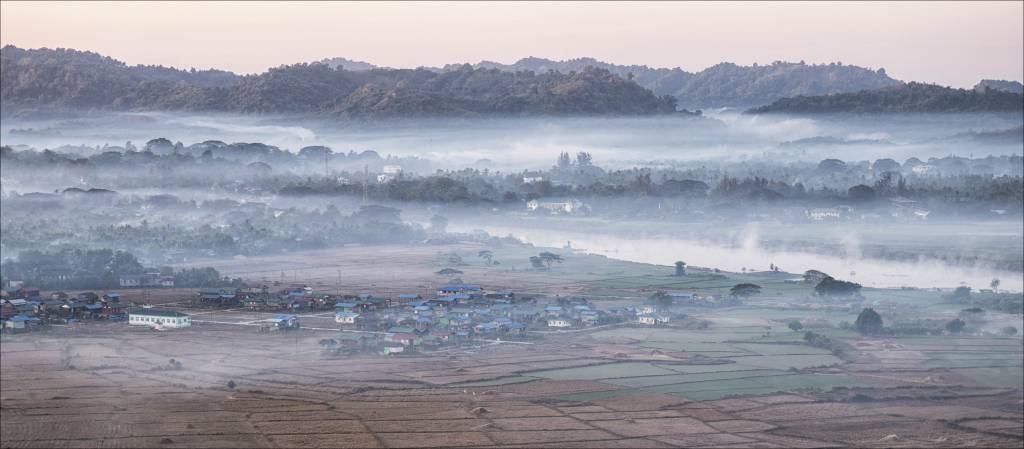
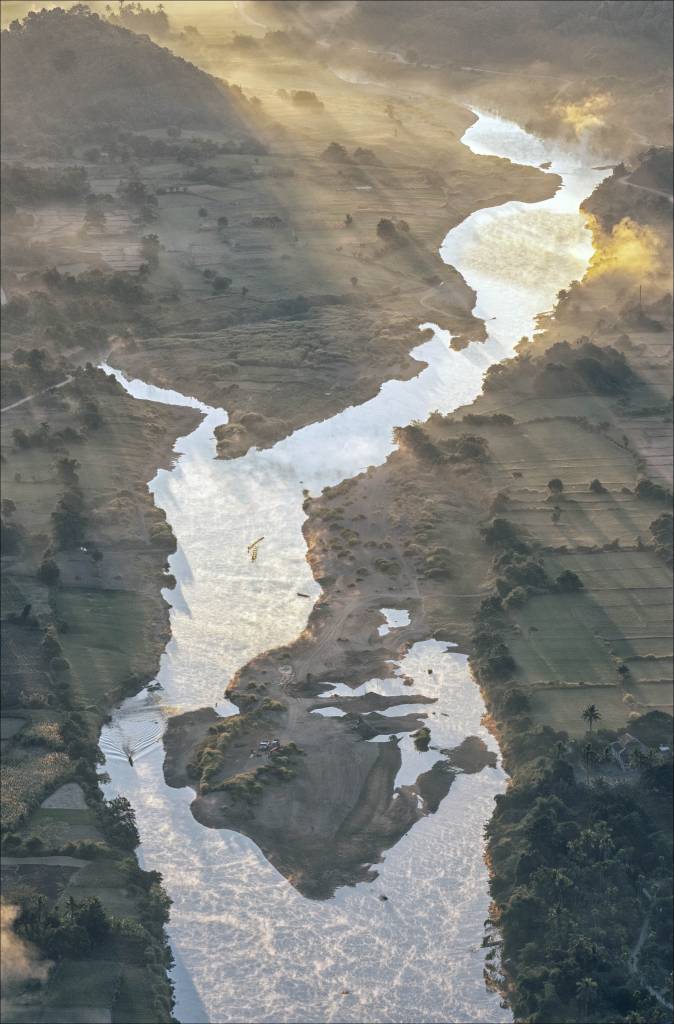
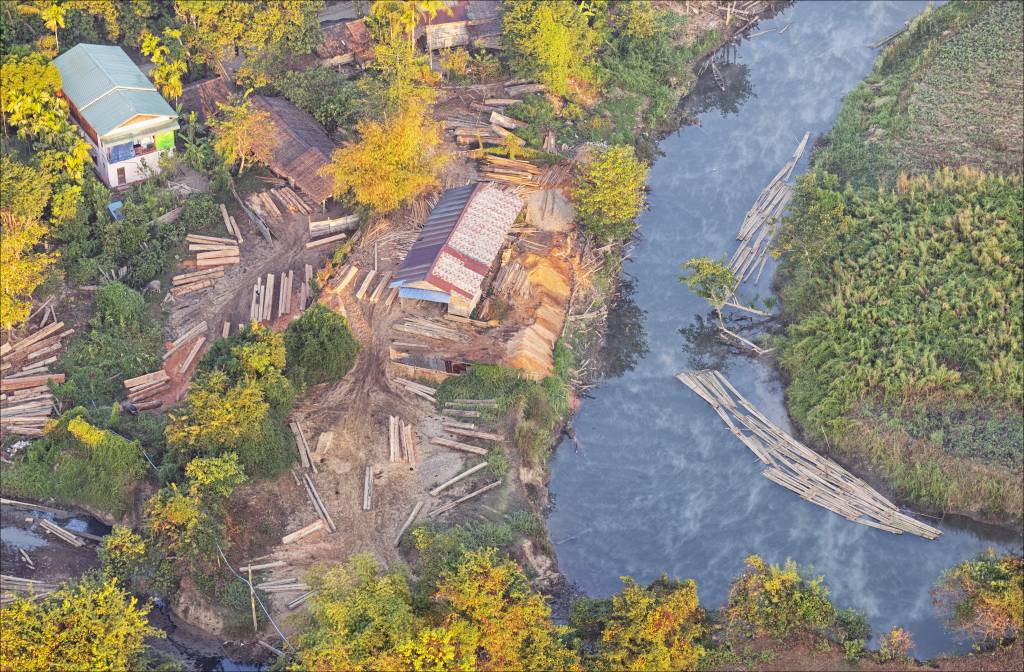
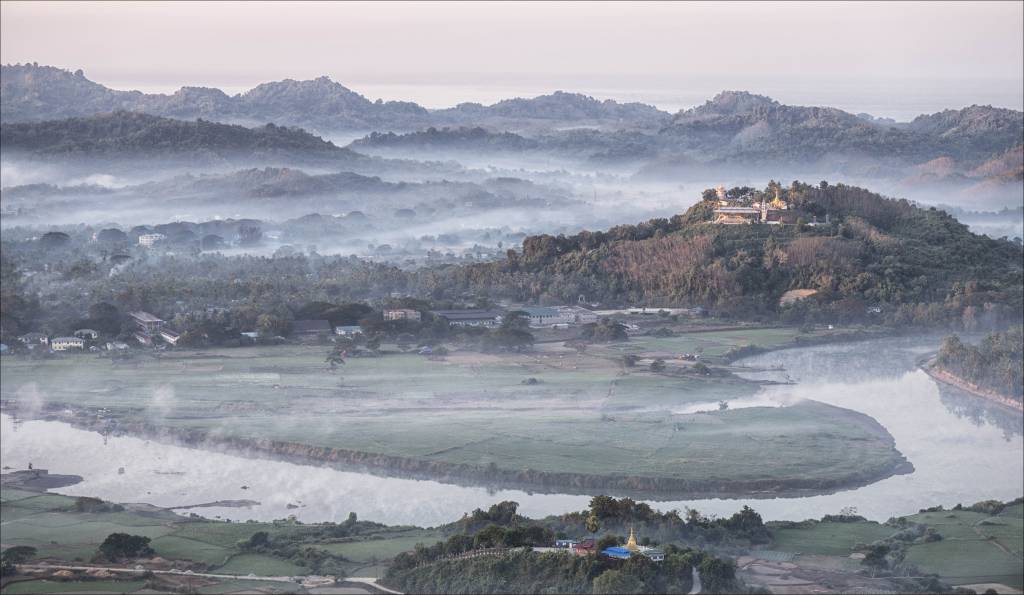
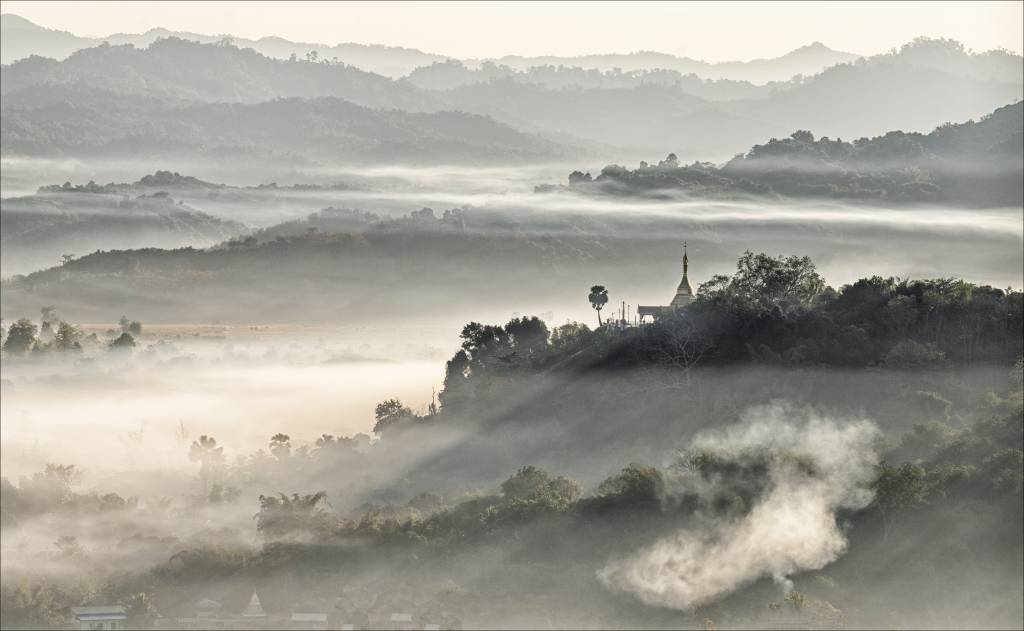
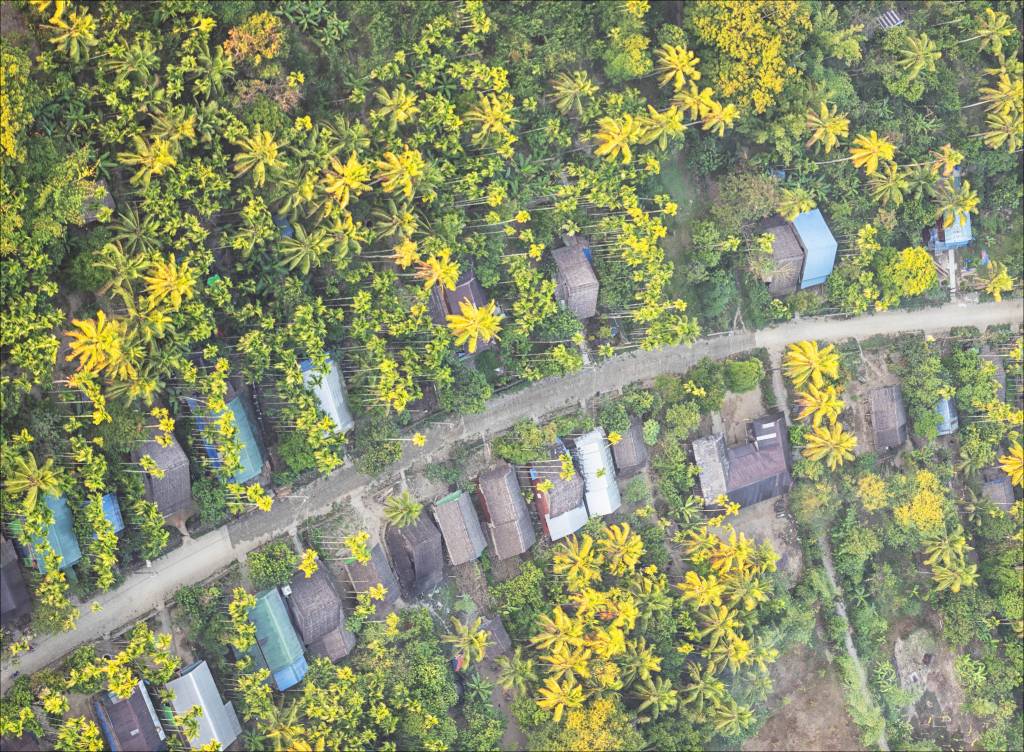
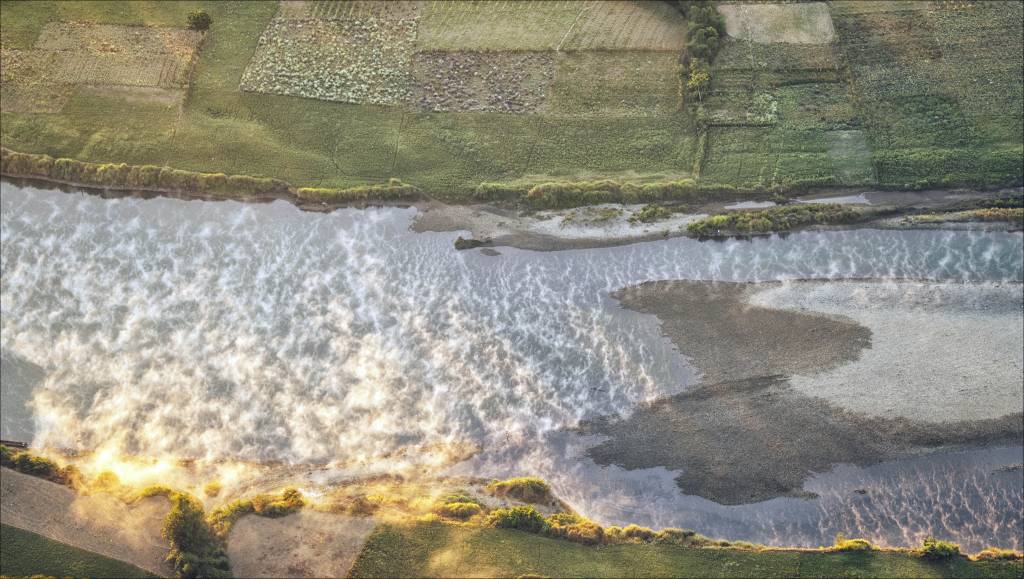
Would a 70-200 F4 be enough?
Really interesting and well illustrated article Dennis. I was fortunate to attend Bristol Balloon Fest years ago, with Iain McGowan FRPS. We managed to be included with the press photographers and had all areas access!
Lovely photos, Dennis, specially the two pagoda and royal palms in the mist. Bet you were holding on tightly to that SL when looking down :-).
Yes indeed – it would inflict considerable damage if it fell!
Lovely photos, Dennis. Just one question. Do the people from Bristol supply parachutes to passengers? Apologies if I missed this above.
William
No parachute supplied but they do offer champagne after.
My first comment. I loved that write up. Thank you Dennis!
Welcome to Macfilos, Omar. We have a very active comments section populated by very nice people. So feel free to comment again in the future. Mike.
Glad that you liked it Omar.
Ethereal images. Wonderful.
But, ultra-early morning…..aaarrrgghhh…..night owls find that truly hard work 😁.
Yes, but it is worth it Wayne – really!
Thank you Dennis for this unusual and beautifully photographed article. I am so used to seeing photos taken by a drone that this was a real treat. How did you find the 90-280 zoom regarding handling, very heavy or manageable?
The body and lens are heavy but well balanced. The SL is the best camera that I’ve ever used and the optics are a delight.
I’ve never seen or read anything like this before – beautiful and mind-boggling. Thanks a million!
Thanks Dennis for this amazing article. I’m just speechless looking at your wonderful images. Your eyes, the SL and Myanmar from up in the air are a match in heaven.
Many thanks Jean, Myanmar is an amazing country with some of the nicest people that I have ever met and the SL, well, it puts the icing on the cake.
I was in Myanmar a few years ago and the people were really kind and friendly. I had no SL at the time, just Ricoh GR
Thank you Dennis, very nice story and very good images!
Pleased that you enjoyed it. If other people get some pleasure from my images it makes it worth while.
As the Fifth Dimension sang, “UP UP AND AWAY, WOULD YOU LIKE TO RIDE IN MY BEAUTIFUL BALLOON, “ this has to be another first for Macfilos. Thank you!
Thanks John but not too much singing at that ungodly hour, more groaning and cursing!